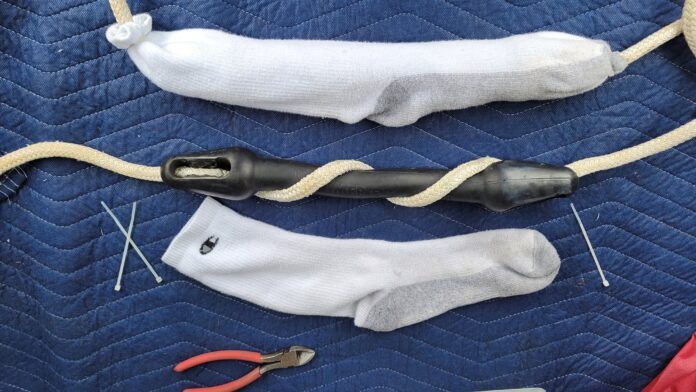
Point me to any boat, anywhere, anytime and I can guarantee you I will find a few tricks or particular set-ups made by its owner and crew to make their tasks onboard easier and/or more efficient.
To continue reading this article or issue you must be a paid subscriber. Sign in
Subscribe to Practical Sailor
Get full access to Practical Sailor - over 4,000 articles - for just $34.
Subscribe today and save 42% off the annual rate.









































Where can I buy a boat hook end to screw onto a painters stick?
Amazon or your local boat store.
Boat Hooks for Docking Telescoping Boat Hook Pole Push Pole for Boat Docking Stick Boat Hook Adapters Screw End 3/4″ Thread Boating Accessories Marine Push Dock Stick Pontoon (Hook Only or with Pole) https://a.co/d/ccbfken
I also would like to a boat hook end that would screw into the painters rod.
Amazon or your local boat store
Boat Hooks for Docking Telescoping Boat Hook Pole Push Pole for Boat Docking Stick Boat Hook Adapters Screw End 3/4″ Thread Boating Accessories Marine Push Dock Stick Pontoon (Hook Only or with Pole) https://a.co/d/ccbfken
A boat hook that is fiberglass could be an advantage in a stray electrical current situation. This may be a bigger problem in fresh water because of the difference in electrical conductivity between fresh and salt water, but if a boat has its shore power improperly directed to the water, not properly connected, swimmers can suddenly have their muscles freeze and drown. This actual cause — electrical shock drowning — can be missed because it is a step away from the cause of death. Using a non-conductive boat hook to retrieve them could have obvious benefits. There is a place that sells telescoping fiberglass tubes for radio antennas called Max Gain Systems that also has boat hook ends.
Agree, but a painter’s extension pole is east to find, come on different expansion lengths and already have the right thread to screw on the boat hook attachment.
Haven’t used it myself, but this appears to be an option for boat hook for painters pole: Five Oceans Boat Hook End – Boat Hook for Docking (Attachment Only) – Screw-on Boat Hook Replacement Top – FO4728
Looking for covers for your fenders? Can’t find large enough socks?
Try cutting off the legs of the largest size sweat pants that you may need.
Lots of colors available.
Thar sounds like a good idea..
We use old hockey socks to cover our fenders to protect the boat from dock rash. Less expensive than fender covers and they work well for a season or two in the northwest.
I assume you used a hook from an old broken boat hook? Did you just slide it inside and rivet it in place or similar?
I know what your talking about re. breakage. On my cruising cat I used two fixed poles (one lived forward, the other aft); they were reliable and a cruising cat tends to really fill the slip (no long reaches). With my trimaran I have some very long reaches to grab lines, so a single 3-section pole from Davis is my favorite; it is light enough that I can single hand it from the end, which I couldn’t do with anything stronger. But it’s not strong and is not good for pushing. I can see having a shortish (6 feet) fixed pole for pushing and a long, more delicate pole for grabbing distant lines.
Good idea, testing a painters extension!
Hi Drew, I got the book hook end on Amazon and it screws right on. Here is the link
Boat Hooks for Docking Telescoping Boat Hook Pole Push Pole for Boat Docking Stick Boat Hook Adapters Screw End 3/4″ Thread Boating Accessories Marine Push Dock Stick Pontoon (Hook Only or with Pole) https://a.co/d/ccbfken
Very cool!
Beware of barnacles and abrasive marine life growing on the fender covers. Unless washed frequently, at least at marine docks, they are known to become more abrasive than vinyl fenders.
Also, if they touch the water they wick water upwards, creating a great growing environment. Keep them well above the water.
I don’t cover my fenders. Did many noons ago and they were more trouble then they are worth.